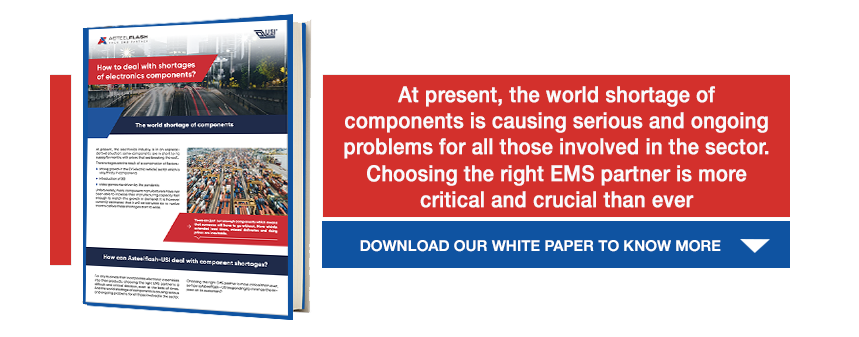For supply chain managers in the electronics sector, one topic is currently dominating their thoughts and their work: the global shortage of components. But how has this come about, what is the future outlook and what can be done to minimise the impact of the shortages?
Ramy Karoun, VP of Supply Chain for Asteelflash, offers his expert insights.
Demand for components
Most users of electronic components first became aware of supply problems around September 2020 and since then, the situation has further deteriorated as suppliers and users alike have depleted their buffer stocks. The shortage is the result of a combination of factors. Because in part to the introduction of 5G mobile technology, strong growth in the EV (electric vehicle) sector and the increased uptake of video games driven by the pandemic, demand for components has never been higher.

Unfortunately, component manufacturers have not been able to increase their manufacturing capacity fast enough to match this growth in demand, although most are now working at speed to bring additional capacity on line. It is however currently estimated that it will be between six and twelve months before these moves start to ease the shortages.
Challenges for supply chain managers
In the meantime, supply chain managers face the challenges of long and fluctuating lead times, disrupted delivery schedules and rising prices. And to be brutally honest, in the short to medium term, there is no completely satisfactory solution: right now there simply are not enough components anywhere in the world to satisfy the requirements of all those who need them.
The future
In the longer term, supply restrictions will undoubtedly ease, with significant improvements probable from early 2022. Prices will also stabilise, but no one should expect them to return to pre-crisis levels. Before the crisis, prices of electronic components had been falling in real terms for at least 20 years, which is in part why manufacturers had been reluctant to invest in new production facilities. Now prices are rising to more realistic levels that make such investment attractive, and these higher prices will inevitably prevail for the foreseeable future.

With all of the foregoing in mind, what can supply chain managers do to mitigate the effects of the component shortage crisis? We’ll deal with this question in more detail in a future blog post but a key suggestion is to work with an established and experienced EMS. It is, however, necessary to sound a cautionary note: in selecting an EMS partner, be wary of any promising a ‘quick fix’ for component shortage issues. As we’ve seen, it is very unlikely that they will be able to deliver on their promises.
In contrast, Asteelflash, now working with USI, offers no miracle cures. What we do offer customers is the benefit of working with a global organisation that has excellent and long-established relationships with component suppliers all around the world. In a nutshell, this means that if components exist, Asteelflash is in an excellent position to be able to source them. And if they don’t, the company has outstanding expertise in devising alternative solutions.
At Asteelflash - USI, we provide fast and consistent services at the most competitive price possible. We’ve only scratched the surface of the problems here, so why not book a meeting with one of our experts to find out more about how EMS companies could help you deal with components shortages.




